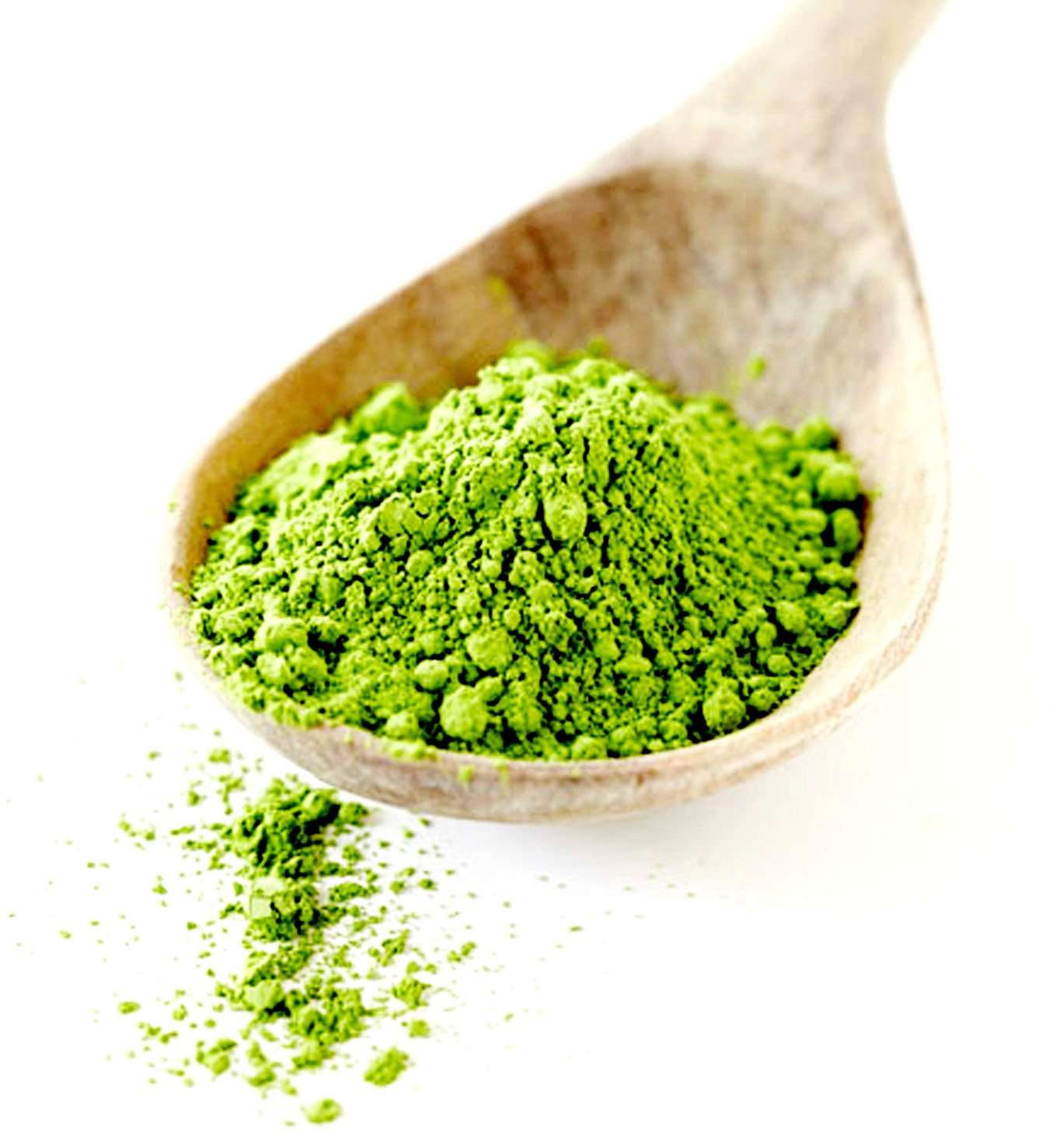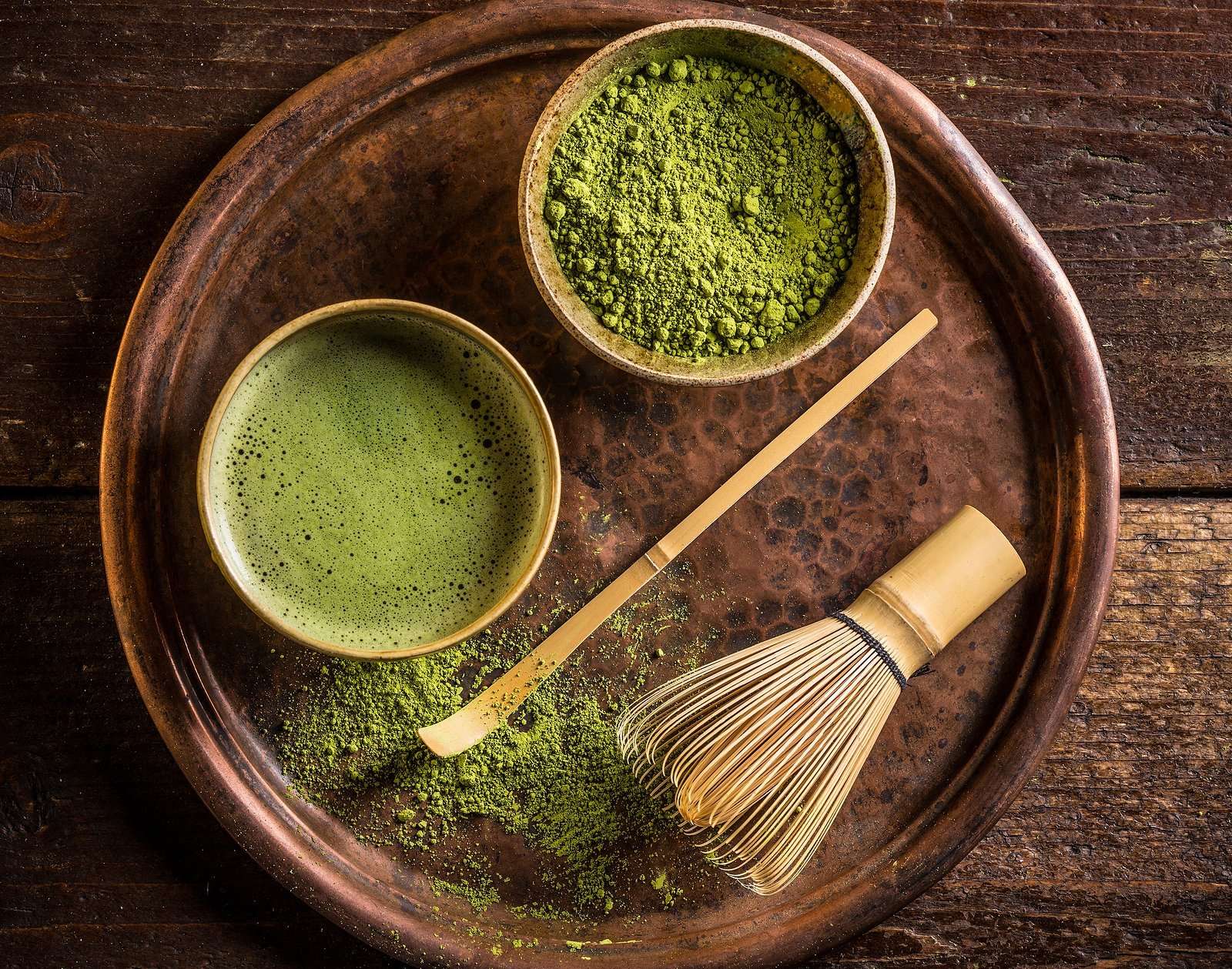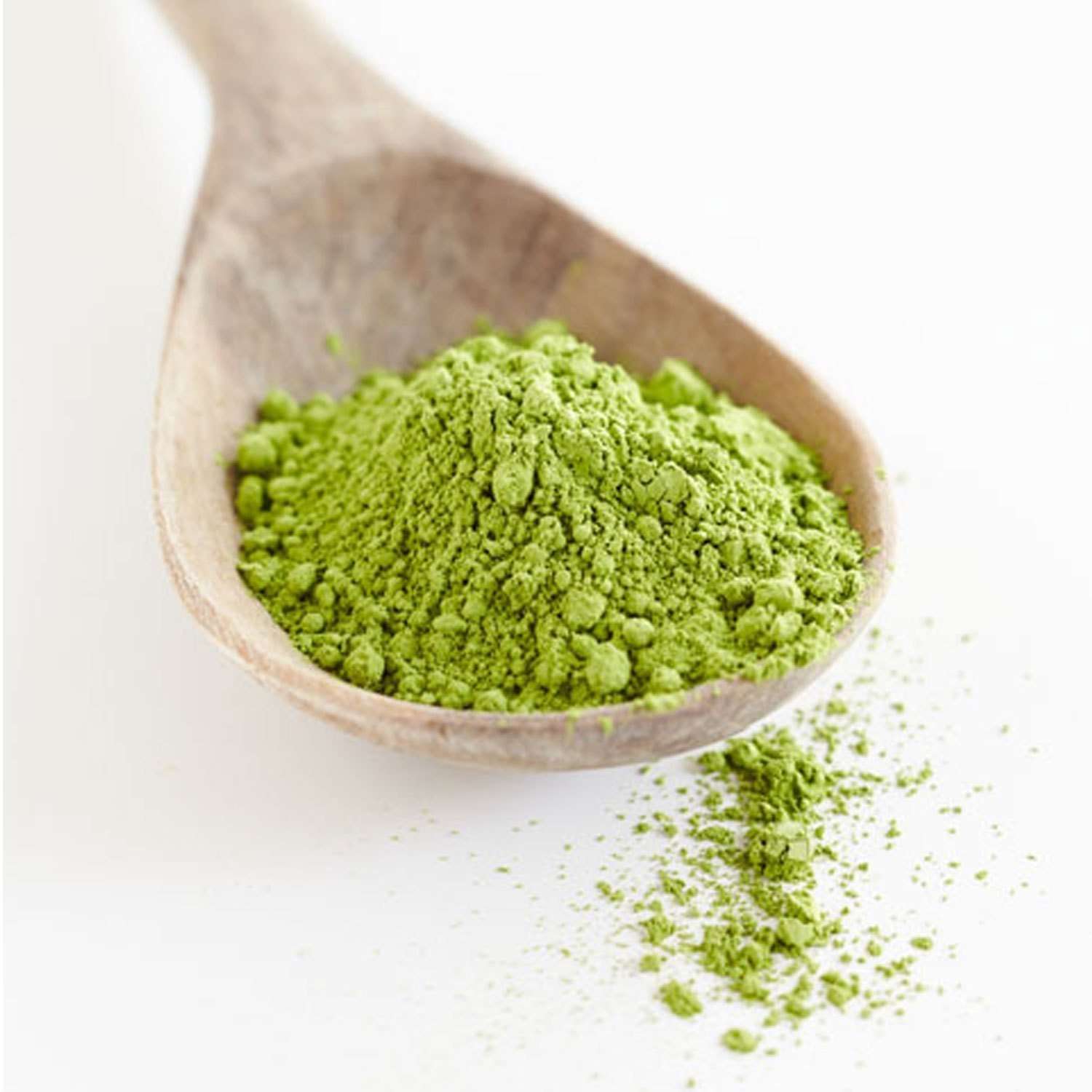Safety Risks: What To Look For And How To Avoid Them
Guzzling down the entire tea leaf in the form of matcha powder means youre also consuming any harmful substances lingering in the plant, including pesticides or heavy metals found in the soil like aluminum or lead.
One way to limit exposure to these substances is to drink matcha in moderation. Chemicals and metals aside, matcha also contains higher concentrations of minerals like calcium, magnesium, potassium and phosphorus. Though our bodies need these nutrients, too much at one time can overload our kidneys, which are responsible for filtering these minerals from our blood.
Capping consumption at one cup per day is a good idea to ensure we dont get too much of the good or bad stuff, maximizing matchas wellness benefits.
Another way to ensure your matcha is free of pesticides is to stick with organic matcha. Look for the USDAs certified organic label, which signifies that the product was grown without the use of pesticides or synthetic fertilizers, and processed without the addition of artificial colors, flavors or preservatives.
Simple Ways To Help Protect Your Skin
If you have a problem with acne, combine matcha with crushed dill leaves and diluted lemongrass oil. Apply the mask to your face to treat acne blemishes.
If youre not a DIYer, purchase matcha facial products. These may even out your skin tone, slow skin aging, exfoliate, heal blemishes, and moisturize the skin.
How Does Matcha Compare To Green Tea
Both regular brewed green tea and matcha contain caffeine, but less than coffee or black tea. Matcha appears to contain more caffeine that regular brewed green tea.
It also appears to contain more EGCG. ConsumerLab.com, an independent testing group, tested matcha products in 2015 and found that matcha provided 17 mg to 109 mg of EGCG per serving. By comparison, the average brewed green tea provides 25 to 86 mg per serving. While matcha powders contained more catechins per gram than brewed green tea, it was substantially more expensive: The lowest cost matcha powder was available at the time for $2.31 for 200mg of EGCG, compared to 27 cents for the same amount from brewed green tea. Compared to the powders, matcha in tea bags provides significantly less EGCG.
Part of the whole aura is that its an experience, says Dr. Tod Cooperman, the president of ConsumerLab.com. But you are paying a premium for that nice experience.
Don’t Miss: Do Snapples Have Caffeine
How To Prepare Matcha Tea
Matcha is brewed differently than other types of green tea. Instead of steeping a tea bag and removing it, you’ll add matcha powder to a cup of hot water. With matcha, you consume the entire tea leaf.
Brewing instructions:
- Boil water and add 8 to 12 ounces to a mug.
- Add 1 or 2 scoops of matcha powder .
- Use a matcha whisk to blend the powder into the water until the mixture is frothy.
- Add honey or sugar for a sweeter flavor.
Matcha powder can also be mixed with milk or a dairy alternative to make a creamy latte or added to a smoothie. Once you’ve finished brewing, have a seat, take a sip, and enjoy your healthy beverage.
It Might Boost Your Skin’s Glow

Miyashita recommends trying matcha instead of coffee for a week if you have skin concerns, because of its sky-high vitamin levels.Vitamin C stimulates collagen production when ingested according to this study in the journal Nutrients. And vitamin B can help to promote healthy skin cell turnover, according to a study from the Advances in Skin & Wound Care journal.
Recommended Reading: How To Pass The Teas
So How Is Matcha Made
Matcha is the tea powder made from the leaves of the Camellia sinensis plant, as all true teas are. These leaves are specially grown, in gradual darkness to they produce a very specific flavor and color, which is what gives Matcha its signature taste.
Matcha leaves are grown in very specific conditions, then after picking are steamed to preserve color and nutrients. They are then deveined and the stems are removed, and finally dried.
The dried leaves are then ground into a very fine, talc-like powder that is Matcha tea.
This entire process is very specific in what must be done and when, and how. It’s both time consuming and labor intensive, which makes a cup of Matcha that much more valuable.
What Does Good Vs Bad Quality Matcha Taste Like
Good-quality matcha has a slightly sweet taste. It is bright in color and creamy in texture, while the average matcha can be more yellow and grainy. The quality of the leaves makes all the difference. With cheaper matcha, it is likely that tougher, older tea bush leaves are used instead of the more vibrant and younger green leaves.
You May Like: Peach Peace Tea Bulk
Matcha Vs Green Tea: Matcha Powder Is Better Here’s Why Plus 5 Tips
CONTRIBUTING AUTHOR: TEAM MATCHA.COM
Have you ever found yourself wondering about the difference between matcha vs. green tea? You’re not the only one! While green tea has long been linked to various health benefits, such as weight loss, reduced stress, and better cardiovascular health, a brighter shade of green tea is stealing the spotlight: matcha.
Matcha is a powdered, high-grade green tea with higher amounts of caffeine, antioxidants, and added health benefits due to how it is grown and prepared. Keep reading to find out precisely what matcha powder is and why it’s considered healthier than other types of green tea.
Price Of Matcha Vs Green Tea
Matcha is usually more expensive than green tea. Why is this so?
It’s because Matcha is made from the finest green tea leaves that are shade-grown these are also only grown in specific regions of Japan.
Matcha that isn’t from Japan is, well not really Matcha.
Furthermore, tea leaves for Matcha are always harvested by hand.
Stems and veins are removed from the leaves by hand, before they are stone ground in special stone mills to form Matcha powder.
Don’t Miss: Does Green Tea Cause Kidney Stones
Matcha Vs Green Tea: What Is The Difference
Blog HomeTea LibraryGreen Tea and MatchaPosted:
Curious about the difference between matcha green tea powder and green tea? Although these two beverages share several commonalitiessuch as the fact that they are both derived from the Camellia sinensis plantthey are indeed two distinct beverages.
Matcha and green tea have different flavor profiles, cultivation and preparation methods, and even health benefits. Many tea drinkers enjoy both green tea and matcha tea, while others have a preference between the two. Discover the differences between matcha powder and green tea, and learn which may best suit your needs.
Best Culinary Grade: Jade Leaf Culinary Matcha
Culinary grade matcha can be enjoyed in traditional tea form, but it’s best for mixing into recipes: smoothies, baked goods, saltyou name it. Since the tencha leaves are harvested later in season and ground with more heat, the resulting powder has a darker color and more bitter taste. This helps it “stand up to the strong flavors in milk, butter, and sugar,” explains Puyane.
One of the most popular and highest-rated options in the culinary category is Jade Leaf’s Culinary Matcha. The flavor is rich and earthy, not sweet, and customers describe the powder as versatile and easy to blend. All Jade Leaf products are 100 percent organic and sourced from Japan, with this matcha farmed in the Uji region. It’s affordably priced and available in four sizes, starting at 30 grams and working up to 1 pound. The company also prints handy recipes on its bags for easy-to-make matcha treats.
Grade: Culinary | Origin: Uji and Kahoshima, Japan | Harvest: Second harvest | Size: 30, 100, and 250 grams or 1 pound
High-quality matcha comes at a high price point, of course. Ummon-no-mukashi is likely best for die-hard matcha lovers or those interested in trying a premium matcha for the first time. The company sells a variety of products, including several lower-cost alternatives. Its website recommends new customers start with the more affordable Horai-no-mukashi.
Grade: Ceremonial | Origin: Kyoto, Japan | Harvest: First harvest | Size: 20 and 40 grams
You May Like: Twisted Tea Nutrition
What Is The Brief History Of Matcha
During the Song Dynasty, Buddhist monks began grinding tea leaves into a matcha powder and adding it to hot water in a bowl. A zen monk, Eisai, brought the practice of consuming matcha to Japan. The practice was adopted by Japanese warriors as their pre-battle tea tradition and has since evolved into the contemporary traditional Japanese tea ceremony.
Matcha is now a standard drink in Japan there is an elaborate tea ceremony around drinking matcha. When prepared traditionally, hot water is whisked together with matcha until it forms a smooth, frothy beverage that can be sipped straight from a comfortably cupped bowl.
You’ll Get More Energy Than You Would From Other Teas

Matcha powder has about three times the amount of caffeineas alternative types of brewed teas, says Gorham. Black tea has 47 mg of caffeine per cup, and green tea has 28 mg, while matcha has 70 mg of caffeine. That’s about the same energy benefitor slightly less thana cup of coffee, which has around 96 mg of caffeine per cup.
You May Like: Iaso Tea Where To Buy
Matcha Powder Is Stored And Shipped
Once the grinding is done and the powder is fine enough, the Matcha is done.
The final product should be a very light, very talc-like powder. Bright green with a faint grassy scent.
At this point, Matcha is very sensitive. It needs to be stored in a cool, dry place away from direct sunlight and any humidity since it can lose its flavor and nutrients very quickly.
Usually Matcha gets packaged and is ready for shipping right after this step.
Have You Ever Wondered What The Difference Is Between Matcha And Green Tea I Know I Have Read On To Learn The Differences Similarities And Benefits Of These Two Delicious Drinks
In recent years it seems as though green tea has become increasingly popular not only as a beverage, but as a too! Before I did some research into the benefits of green tea, I had heard great things about its antioxidant properties. Little did I know however, just how much this ingredient can do for your skin and overall health! Matcha on the other hand, isn’t as well understood by the mainstream, which is why I decided to write this blog post and clear up all the benefits, differences and similarities between green tea and matcha!
Also Check: Pros And Cons Of Iaso Tea
What Is Matcha And Where Does The Powder Come From
Matcha and green tea come from the Camellia sinensis plant. But while green tea refers to the actual leaves, matcha is the ground powder of green tea leaves. You can drink matcha the same way you can drink regular green tea. The primary difference is that green tea bags are first steeped in hot water, whereas matcha grounds are added to water and traditionally mixed with a bamboo whisk .
Even though green tea is enjoyed all over the world, its mostly produced in China and Japan. Matcha, on the other hand, is most closely associated with Japan, where its been consumed as a ceremonial tea for centuries.
Tea plants are kept underneath a tarp to reduce the amount of sun exposure. Less sunlight and more shade increases the intensity of chlorophyll, which is the green pigment found in plants. This is what gives matcha its vibrant green color.
After harvesting, leaves are steamed, dried, sorted, and then ground into a fine powder.
The Best Matcha Tastes Great
Green is the embodiment of health, but just because matcha looks healthy doesnt mean it has to taste like grass!Some teas require sugar, milk and lemon to make them drinkable, but the best matcha tea is wonderful on its own. Ceremonial matcha has a delicious vegetal flavor that is complemented by savory umami notes and tastes great both hot and over ice. So sit back, relax, and enjoy a delicious cup of matcha green tea.
Recommended Reading: Teas Test Secrets
History Of Matcha Tea Vs Green Tea
Green tea and matcha powder share similar origin stories. Both teas are cultivated from the Camellia sinensis plant, which can be traced back nearly 5,000 years to ancient China when it was discovered by Emperor Shen Nung.
For hundreds of years green tea was considered a precious medicine that was only available to the most elite members of society. Around 800 A.D. during the Tang Dynasty, a Chinese man named Lu Yu published a book titled The Classic of Tea. This was the first publication documenting the art and culture of green tea in China.
During the Song Dynasty, Buddhist monks began crushing green tea leaves into a rough powder and blending it with hot water in a bowl. The Zen monk Eisai brought this practice to Japan, where it was later adopted by Samurai warriors. Their pre-battle tea traditions eventually evolved into what is now known as the traditional Japanese tea ceremony.
Make Your Own Cha Soba Noodles
In Japan, green tea powder is commonly added to buckwheat noodles to make what the Japanese call cha soba noodles. Cha soba noodles are available in many Asian markets and specialty stores in Western countries, but you can also make your own green tea noodles or pasta. Simply replace some of the flour in your noodle or pasta recipe with matcha or other green tea powder. The ratio 1 heaped teaspoon of matcha powder to every 100 grams of flour usually works well.
You May Like: Twisted Tea Light Ingredients
What To Do With Matcha Powder: 7 Creative Ways To Use Matcha
Matcha powder is a type of green tea powder produced in Japan. The preparation of matcha involves covering the tea bushes several weeks prior to the harvest period in order to prevent exposure to sunlight. As a result of the lack of sunlight, the tea leaves become dark green and start to produce large amounts of the amino acid theanine. Theanine is responsible for many of the beneficial health effects of matcha green tea powder. Matcha powder is used in Japan to brew high quality green tea which is consumed in traditional Japanese tea ceremonies, but this nutrient-dense powder, along with other types of green tea powder, can also be used in cooking and baking. This article aims to provide creative ideas on what to do with matcha powder as well as tips on how to use matcha succesfully in the kitchen.
Differences Between Matcha Teabags And Matcha Powder

Matcha in teabags and powder form seems to be a bit of a debate lately. Some say the teabag version is worth it, mush less hassle and just generally easier to work with.
Others maintain that true Matcha will always need to be frothed with actual Matcha powder, and there’s no need to bring teabags into this.
That’s also the stance I’m supporting, so let’s get into the main differences between powder Matcha and teabag Matcha. Just so we’re all on the same page.
Read Also: Boba Tea Dunkin Donuts Bubble Tea
Different Grades Of Matcha Green Tea Powder
Before you can buy matcha, you have to decide what youre going to use it for. Will you be drinking it in its traditional tea form? Or will you be adding matcha into some of your favorite recipes?
The reason why you have to first know what youll be using matcha for is because there are different grades of matcha green tea powder. Each grade is determined based on its color, texture and quality, and each also has different uses.
The two main matcha tea grades are Ceremonial and Culinary, but culinary is further divided into 5 grades: premium, cafe, ingredient, kitchen and classic.
How Long Does Matcha Last How Should I Store It
The shelf-life of an unopened package depends on how it is packaged. In general, high quality green tea powder lasts for 6 months. Its best to use up within 2-3 weeks of opening the package. To store, seal the package tightly and store inside an airtight can. Avoid storing in direct sunlight and areas with high temperature or humidity. You can do this easily by drinking more matcha green tea or making delicious desserts!
Read Also: Does Menoslim Tea Have Caffeine
Culinary Grade Matcha Is The Most Common
Culinary Matcha, or food grade, is the cheapest and most easily available Matcha possible. It’s usually more of a sandy texture than premium and ceremonial Matcha. This is because the leaves used are second or third harvest, or from lower on the plant.
It’s usually slightly bitter, and this could be a result of not being properly shaded, along with using lower quality leaves.
You’ll also notice a duller shade of green, as opposed tot he bright green of a good Matcha.
The name of this grade comes from the uses it normally takes. You’ll find it in food such as cakes, ice cream, or pastries, and in drinks such as lattes or milkshakes.
You might also find it in iced tea, since it’s usually sweetened.
All this being said, don’t steer too clear away from something labeled culinary grade Matcha. Some companies might have disagreeing opinions as to just how good or poor their Matcha is, and end up labeling a perfectly good premium as a culinary grade.
Where Should I Buy Matcha
We carry various matcha powders, from the highest-quality culinary grade matcha to ceremonial grade matcha. Not sure which matcha powder is suitable for you?
If you’re interested in preparing matcha at home, we also have all the essential accessories you need to whisk up a traditional Japanese-style bowl of matcha.
Don’t Miss: Can Lipton Green Tea Cause Miscarriage